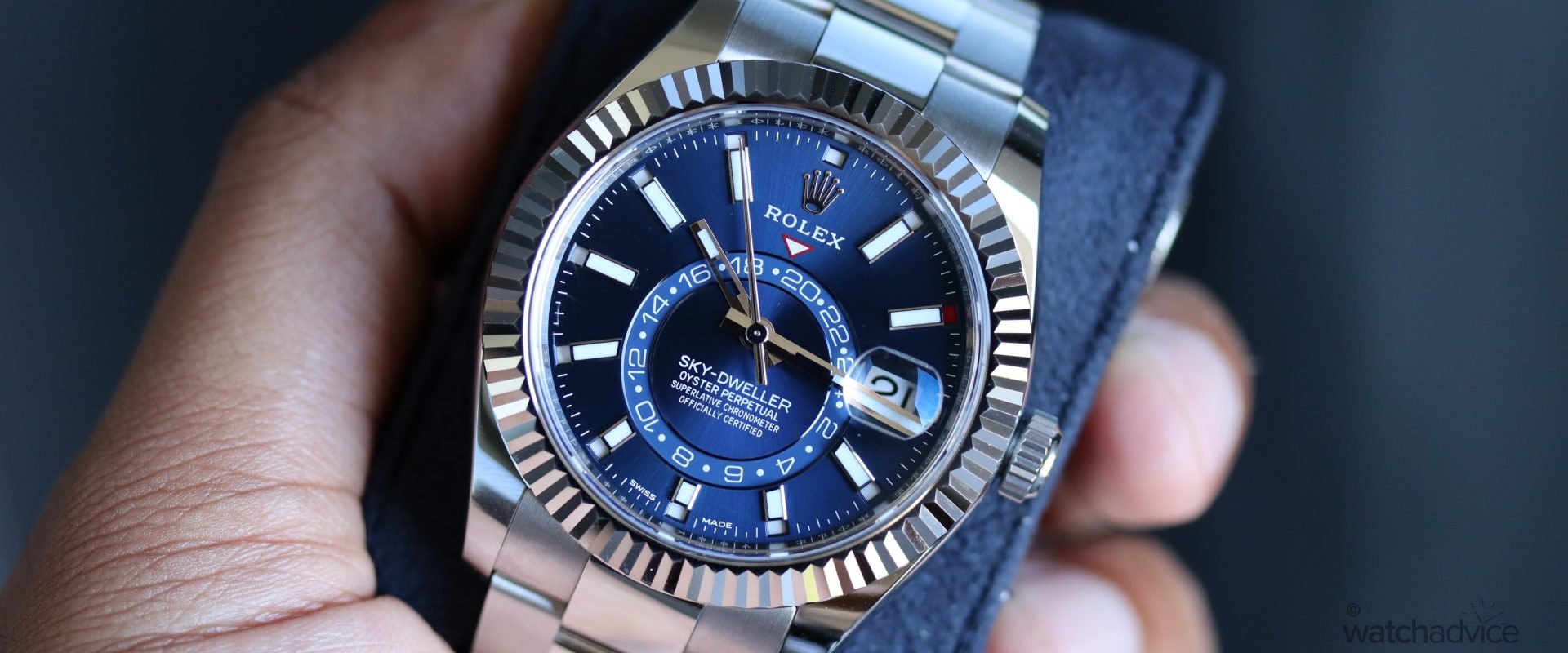One of the more prominent watches in the Rolex line up, the Sky-Dweller is a timepiece that is a true testament to the ingenious creativity that goes on in the in-house manufacturing of this brand. The watch itself is protected by 14 patents, therefore, it would come as no surprise that it’s also one of Rolex’s most complicated watches. The craftsmanship alongside sophistication is displayed to the highest quality in the Rolex Sky-Dweller.
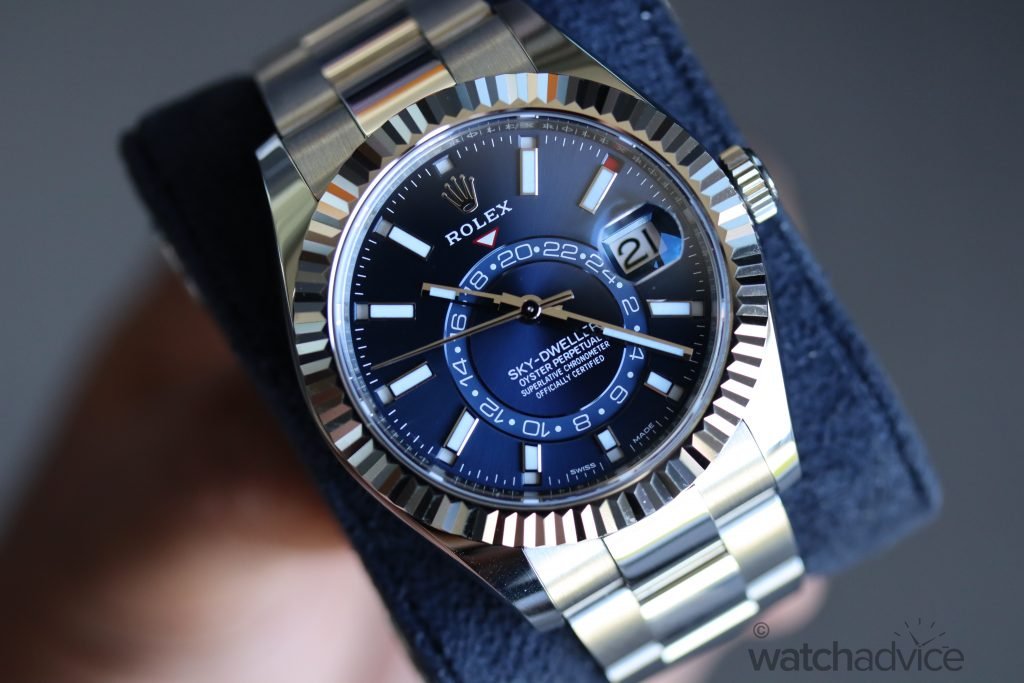
Unlike other Rolex models, the Sky-Dweller has one characteristic feature that stands out from the rest. This being the off-centre 24-hour display disk on the dial. This disk shows a second timezone that enables travellers to differentiate between daytime hours (9 am) and nighttime hours (9 pm) in that second timezone. The two timezones on the watch are displayed simultaneously.

The local time is displayed through the normal hour, minute and second hand on the watch. The fixed red triangle under the Rolex logo on the dial indicates the chosen reference time on the 24-hour display disk. The time on the display disk can be set with relative ease through the use of a complex mechanism that allows the main hour hand to be adjusted independently backwards or forwards in 1-hour portions. When the hour hand is being adjusted, the minute and second hand are not affected.
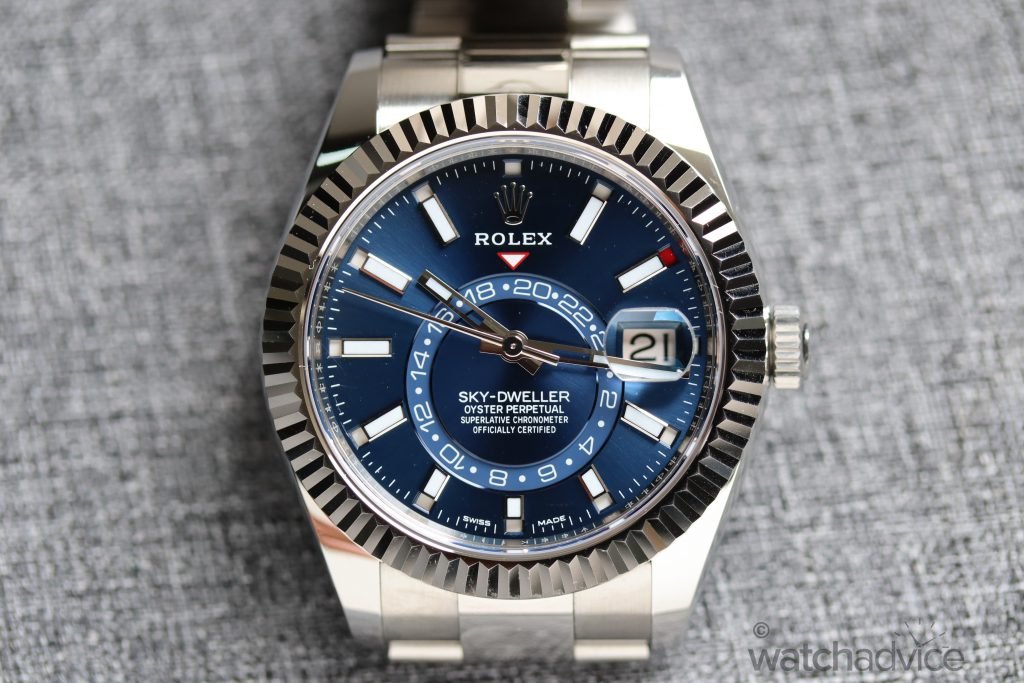
On the Rolex Sky-Dweller, the local time is displayed on the main dial, with the second timezone being shown on the 24-hour display disk. If you were to travel to a different country, then the local time would be adjusted on the main dial, while the 24-hour display disk would show the time back home (or any other location you prefer). As the local time changes on the main dial, the date changes with it accordingly as the two are linked together. The date change itself occurs within a few milliseconds to midnight.
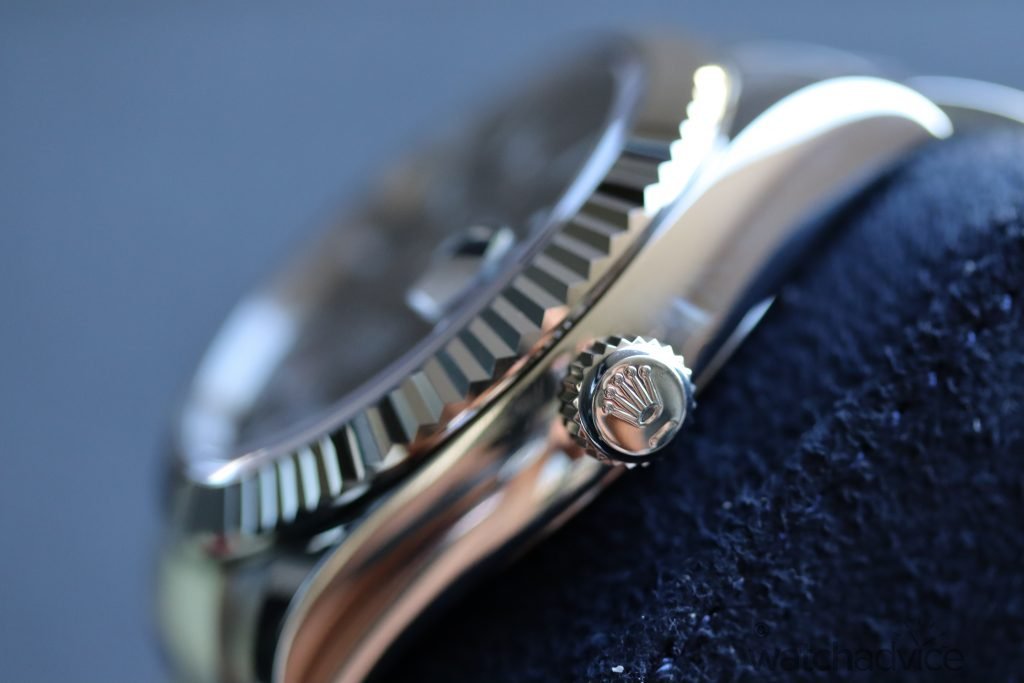
Another intricate feature on the Sky-Dweller is the revolutionary annual calendar. Belonging to one of 14 patents on this watch, the annual calendar is inspired by an astronomical phenomenon known as the Saros. The mechanism is based on a planetary system which includes the Sun, Earth and the Moon. How it works is explained by a fixed gear wheel in the centre of the movement representing the Sun. A secondary wheel (the Earth) engages with the centre gear wheel (Sun) and rotates like Earth’s movement does around the Sun. Although the Earth takes a full year to do this rotation, the movement is simplified to make a full rotation within a month, to be able to represent the thirty-one days. The Moon’s place in all of this is to represent the four months that only have thirty days: April, June, September, and November. The Moon gear wheel has four fingers to represent the four months. As the planetary gears work together and make its rotations throughout the year, the four fingers in the moon gear would get engaged during the thirty-day months. Once the thirty-day month is over, the date would be forced to jump two days to re-calibrate itself with the start of a new month. As the system makes its way through the twelve months, it completes one full Saros calendar cycle and repositions itself to its original place. Ingenious isn’t it?

n addition to the Rolex’s iconic cyclops glass date window that’s displayed, there are also month apertures discreetly shown around the circumference of the dial. These apertures are placed around the hour markers.
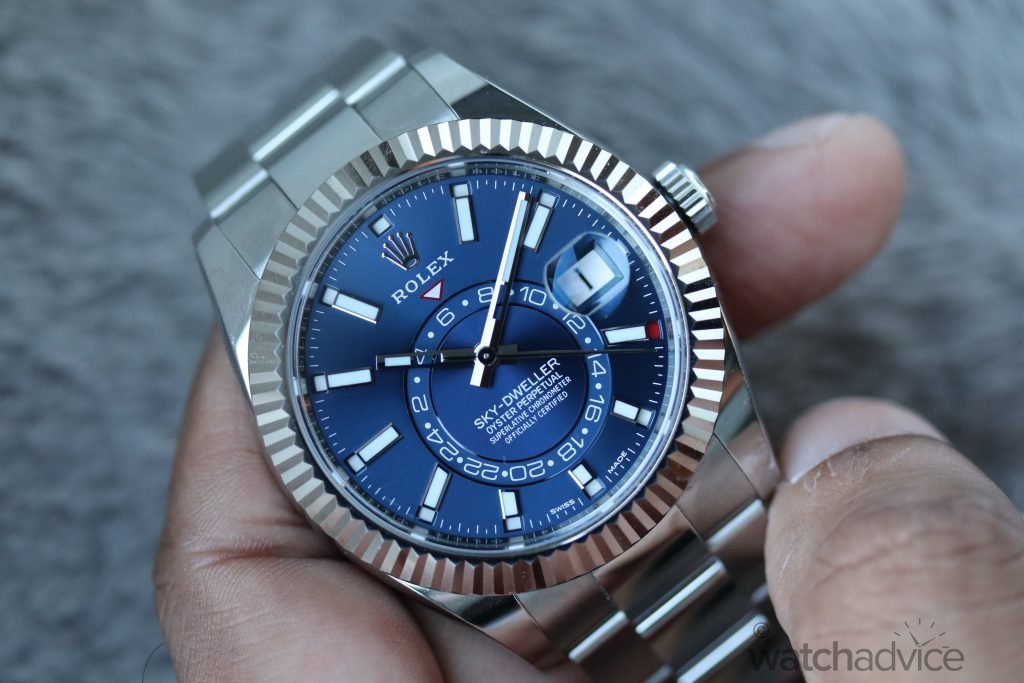
All these characteristics are bought together and controlled by a genuine Rolex signature feature – the fluted bezel. This rotatable fluted bezel interacts with the movement to be able to control the previously mentioned three watch functions: Local time, second-time zone and the date. In many other watches, one would normally pull the crown to adjust the time and date. However, Rolex was able to reduce the number of components used in this complex module down to sixty, just by allowing the fluted bezel to dictate which function needs to be changed. Once decided, use the crown to then adjust as required.

As with all of the movements produced by Rolex, the Sky-Dweller’s main engine, the calibre 9001 is also certified by COSC. The calibre 9001 was created in-house by Rolex. The movement and watch were first introduced in 2012 and it still is one of the most complex in-house movements created by Rolex.

How does the Sky-Dweller wear?
The Sky-Dweller comes in a variety of metals and colour choices. It is available in stainless steel, white gold, yellow gold, and everose gold. The dials are also offered in blue, black, gold and dark rhodium tone. All bracelets and cases are made from the Rolex’s signature Oystersteel. In terms of wearability, the Sky-Dweller can be suited for almost any occasion (besides deep-diving, which Rolex has other models for). With a case diameter of 42mm and thickness of approximately 14mm, the watch is not too bulky for everyday use. The watch is designed for travellers, making it suitable for casual and business wear
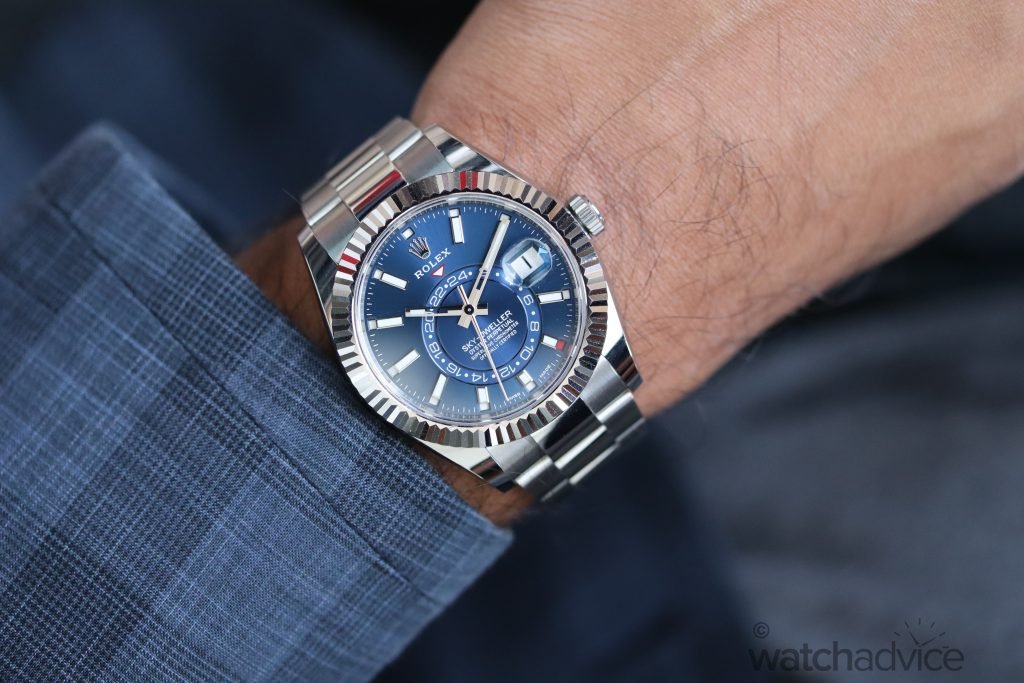
Rolex Sky-Dweller quick facts:
- Patented annual Calender
- Easy to read dual time zone
- Fluted ring command bezel for easy time and date setting
- Rolex self-winding mechanical movement
- Paramagnetic blue Parachrom hairspring and Paraflex shock absorbers

Rolex Sky-Dweller 326934 Specification
- Case diameter : 42mm
- Case material : Oystersteel and 18ct white gold (white Rolesor)
- Bezel : 18ct white gold, fluted, bidirectional rotatable ring command for function setting
- Crystal : Scratch-resistant sapphire, cyclops lens over the date window
- Water resistance : 100 meters/ 330 feet
- Movement : Caliber 9001
- Precision :-2/+2 sec/day after casing
- Power reserve : Approximately 72 hours
- Bracelet : Oystersteel, three piece solid links (polished centre links, satin-finished outer links). Folding oysterclasp with 5mm comfort extension link.


